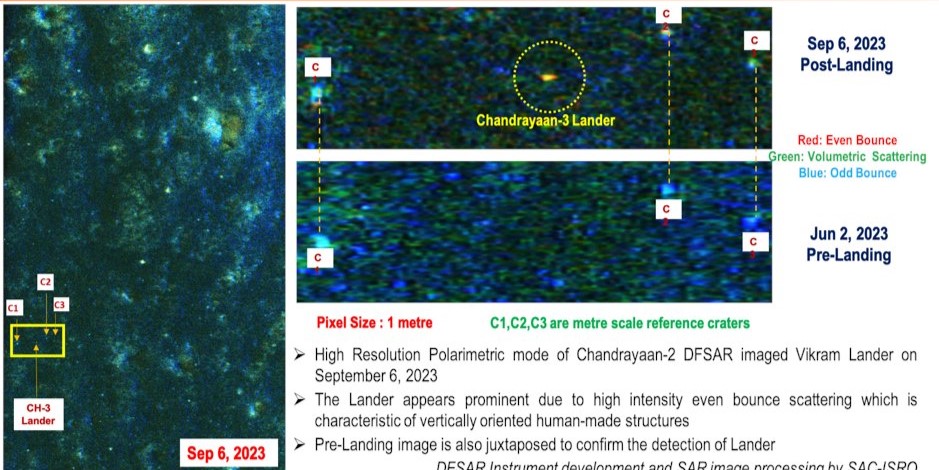
Chandrayaan-3 lander
Chandrayaan-3 Lander: Chandrayaan 2’s orbiter snapped a photo of the Vikram lander on Chandrayaan 3, which entered sleep mode on Monday. In the hopes that the lander will awaken when sunlight returns, providing it can tolerate the extreme cold, it may be seen resting on the lunar surface close to the moon’s south pole.
The double-frequency synthetic aperture radar (DFSAR) instrument on board the Chandrayaan 2 orbiter, which was provided by the Indian Space Research Organisation (ISRO), captured images of the Chandrayaan 3 lander.
Chandrayaan-3 Mission:
Here is an image of the Chandrayaan-3 Lander taken by the Dual-frequency Synthetic Aperture Radar (DFSAR) instrument onboard the Chandrayaan-2 Orbiter on September 6, 2023.More about the instrument: https://t.co/TrQU5V6NOq pic.twitter.com/ofMjCYQeso
— ISRO (@isro) September 9, 2023
When the sun starts to rise again on the Moon in September, ISRO scientists are optimistic that the Vikram lander and Pragyan rover will survive the bitter cold and resume operations. The orbiter uses SAR technology. SAR technology can produce high-resolution polarimetric images of the lunar surface. It has the ability to take images down to a depth of several meters.
DFSAR has supported the third lunar mission over the past four years by continuously delivering high-quality data through imaging, assisting with landing procedures, and enabling two-way communication with the ground stations.
The mission goal of Chandrayaan 2, which was launched in 2019, was the same as the mission objective of Chandrayaan 3. But in the case of the former, the lander had a tragic accident while making a soft landing. However, as demonstrated by recent data, the orbiter is still fully functional and essential to the third lunar mission.



